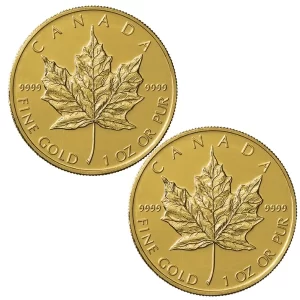What are Counterfeit Coins?
Coins that are counterfeited are made to look like real coins but were not struck by a legitimate mint or government organisation. To trick investors or coin collectors into paying more than the coins are worth, counterfeit coins are frequently produced using inferior materials.
How Do They Make it?
- Casting: Making a mould of an actual coin and utilising it to make counterfeit coins is known as casting. To make a fake coin, counterfeiters melt down metal, such as copper or zinc, and then pour it into the mould. The finished coin won’t feel or sound like a real coin and will be different in weight and density. Considering how simple this process is, the counterfeits that are created are of worse quality and are more noticeable.
- Planchet trickery: A authentic coin’s planchet, or the blank piece of metal used to produce the coin, maybe tweaked by counterfeiters to make it appear to be a more expensive coin. For instance, they might remove some of the metal to lighten the coin or might add metal to make the coin heavier.
- Die cloning: entails producing an exact duplicate of the die, or stamp, that is used to imprint the design on a genuine coin. The phoney coins, which can resemble real coins quite closely, are then struck by the counterfeiters using the die.
- Electroplating: To make a base metal, like copper or nickel, appear like a real coin, a thin layer of more valuable metal, like gold or silver, is applied to the surface.
How to Safely Inspect Counterfeit Coins?
- Verify the circumference and thickness of the coin: Measure the coin’s thickness and diameter using callipers, then compare the results to those of a real coin.
- Magnetic test: To determine whether a coin is made of a magnetic metal, such as iron or steel, test it with a magnet to see if it is attracted to it.
- Verify the precise details: Examine the coin’s design, inscription, and other characteristics with a loupe or magnifying lens, then contrast them with pictures of real coins of the same sort and year.
- Look for use or breakage indexes: Look for wear, blemishes, or other deterioration on the coin’s surface, and compare.
- Verify the weight: Weigh the coin on a scale, then compare its weight to a genuine coin of the same sort and year.
- Consult an expert: If you’re unsure of a coin’s genuineness, consult a reputed coin expert or grading agency, that has the knowledge and resources to recognise fake coins.
What Should You Do If You Suspect Your Coin Is Fake?
If you bought the coin from a reputable dealer, get in touch with them to denounce the forgery and ask for reimbursement or replacement. Reliable vendors will stand behind their goods and take action to make things right. Follow to Spotting Counterfeit Coins in easy steps.
Tags: Spotting Counterfeit Coins
 Hi,
Hi,






















